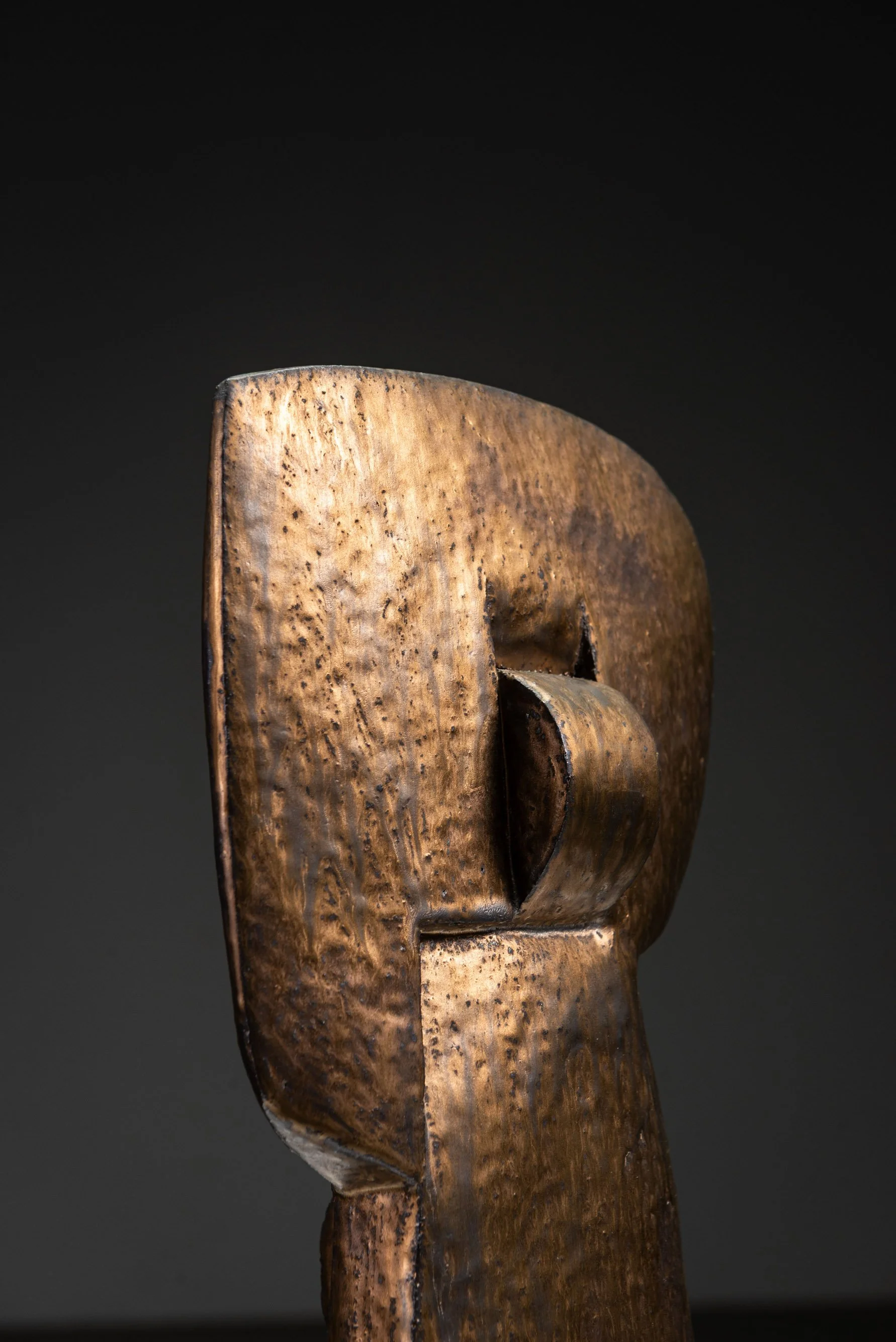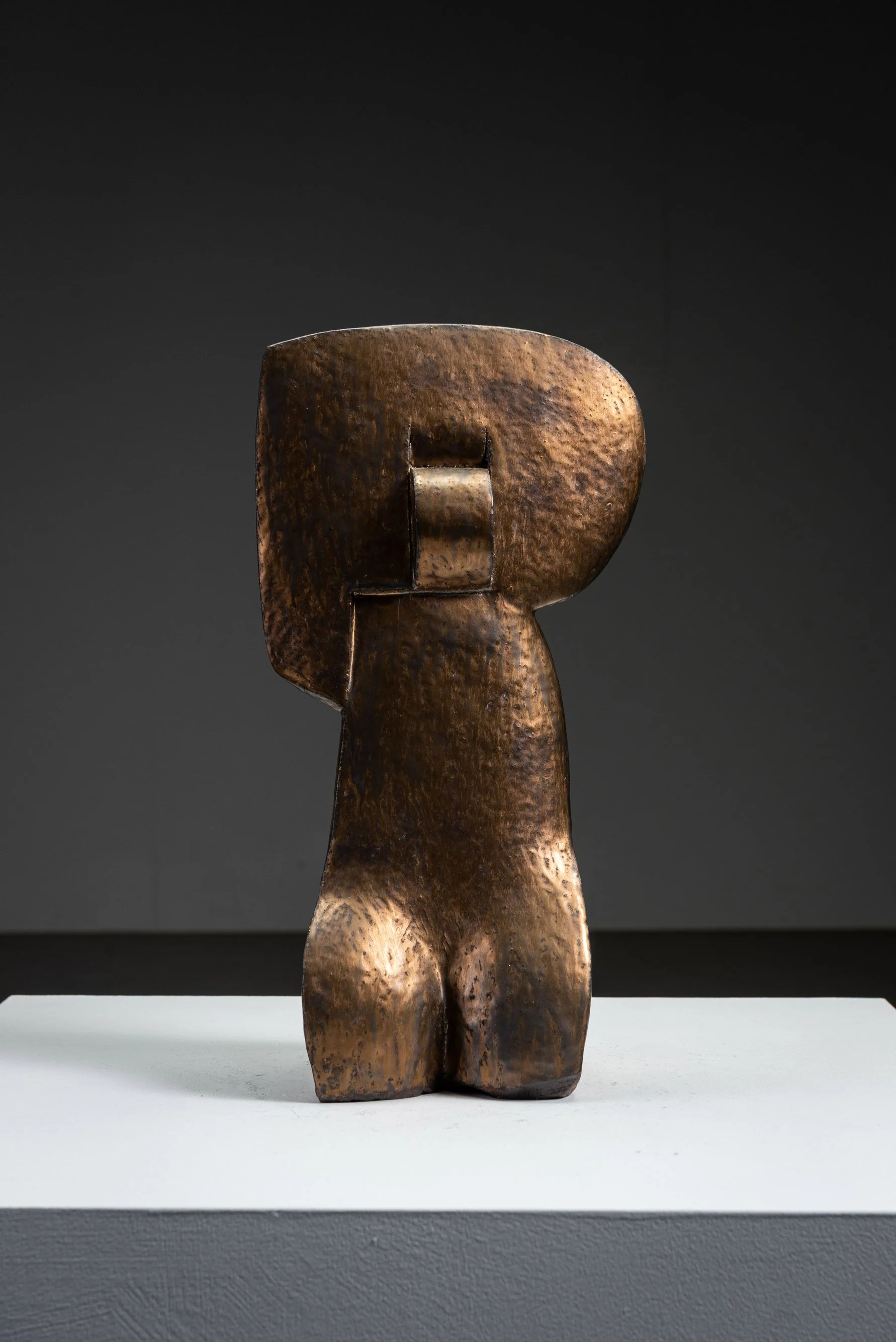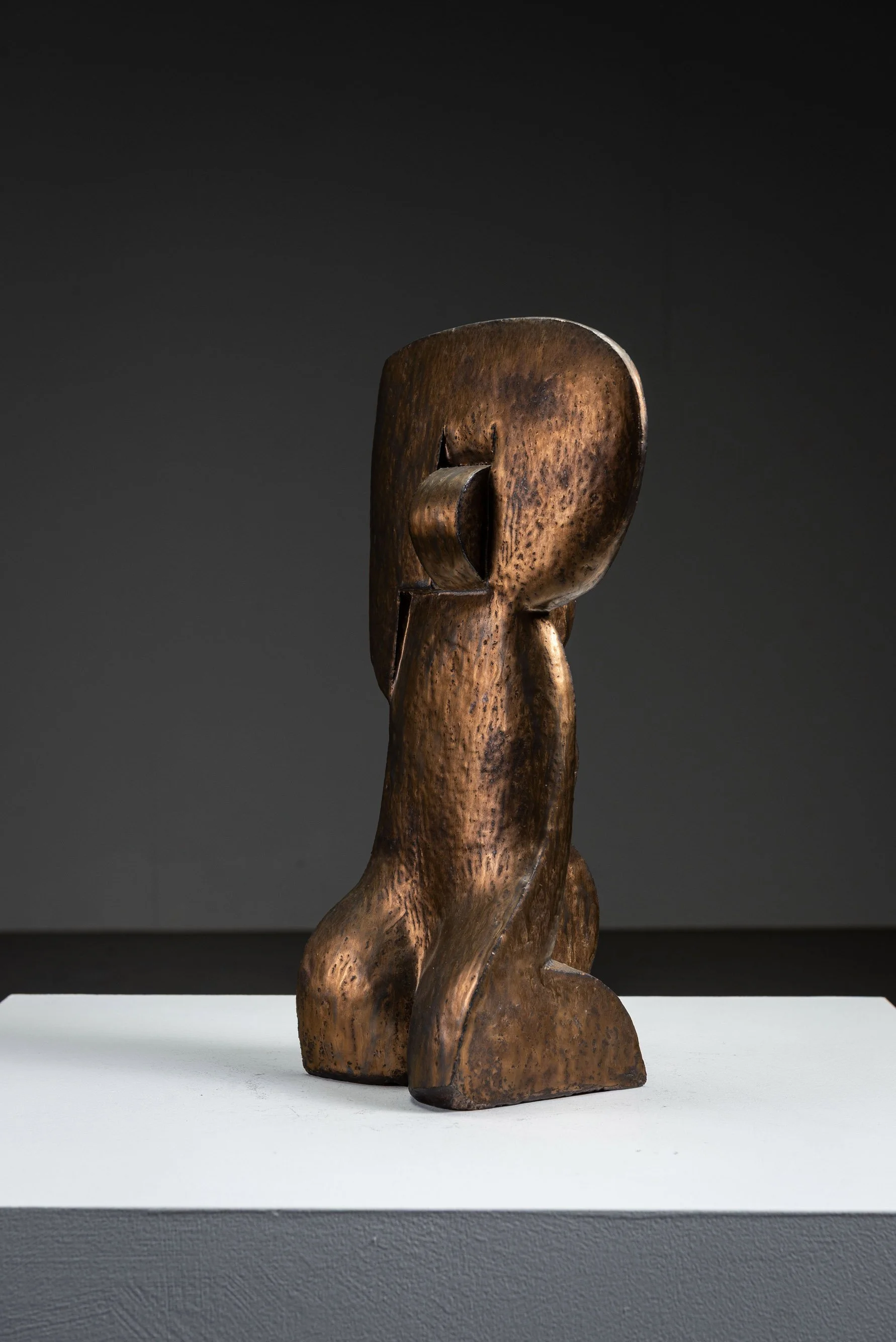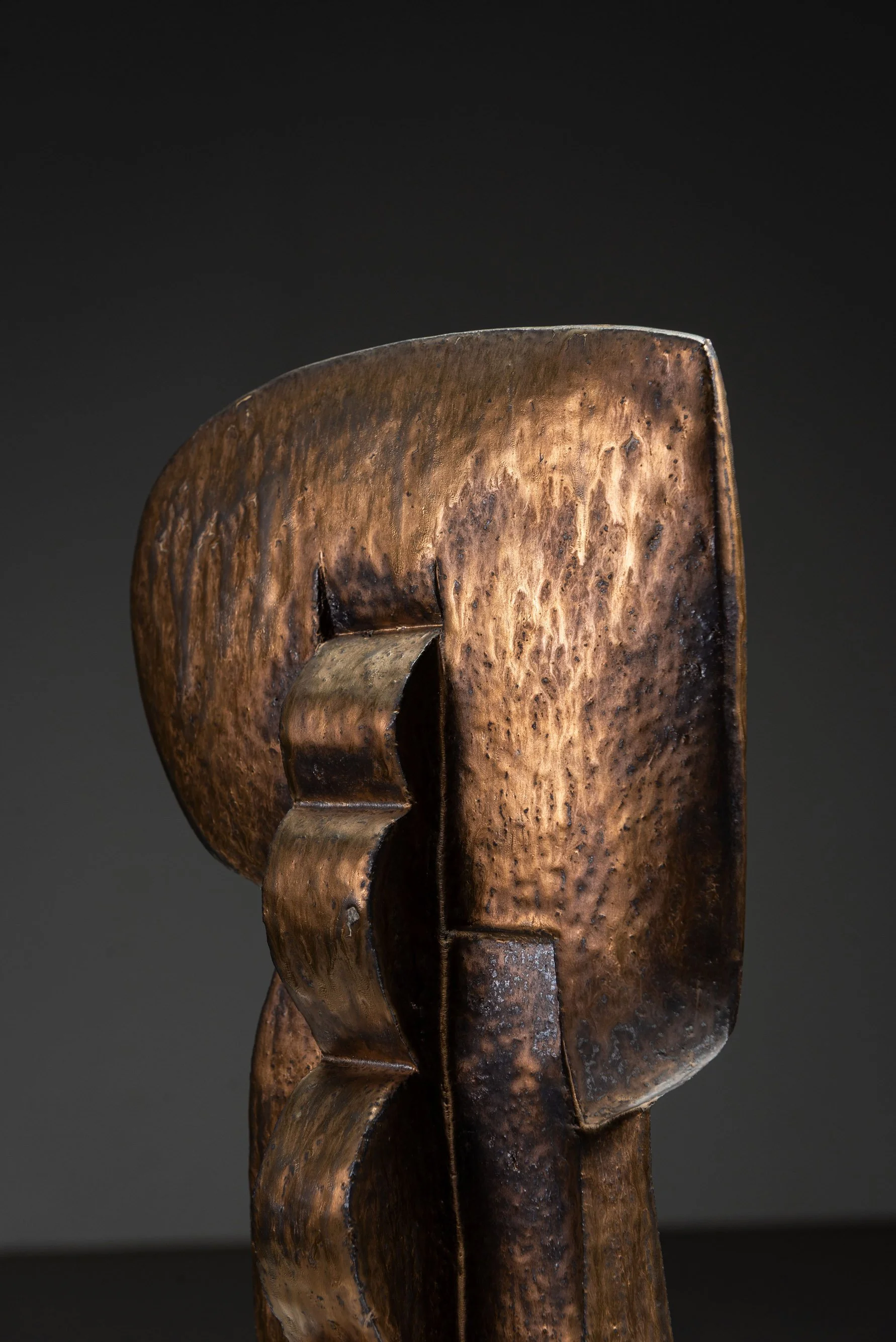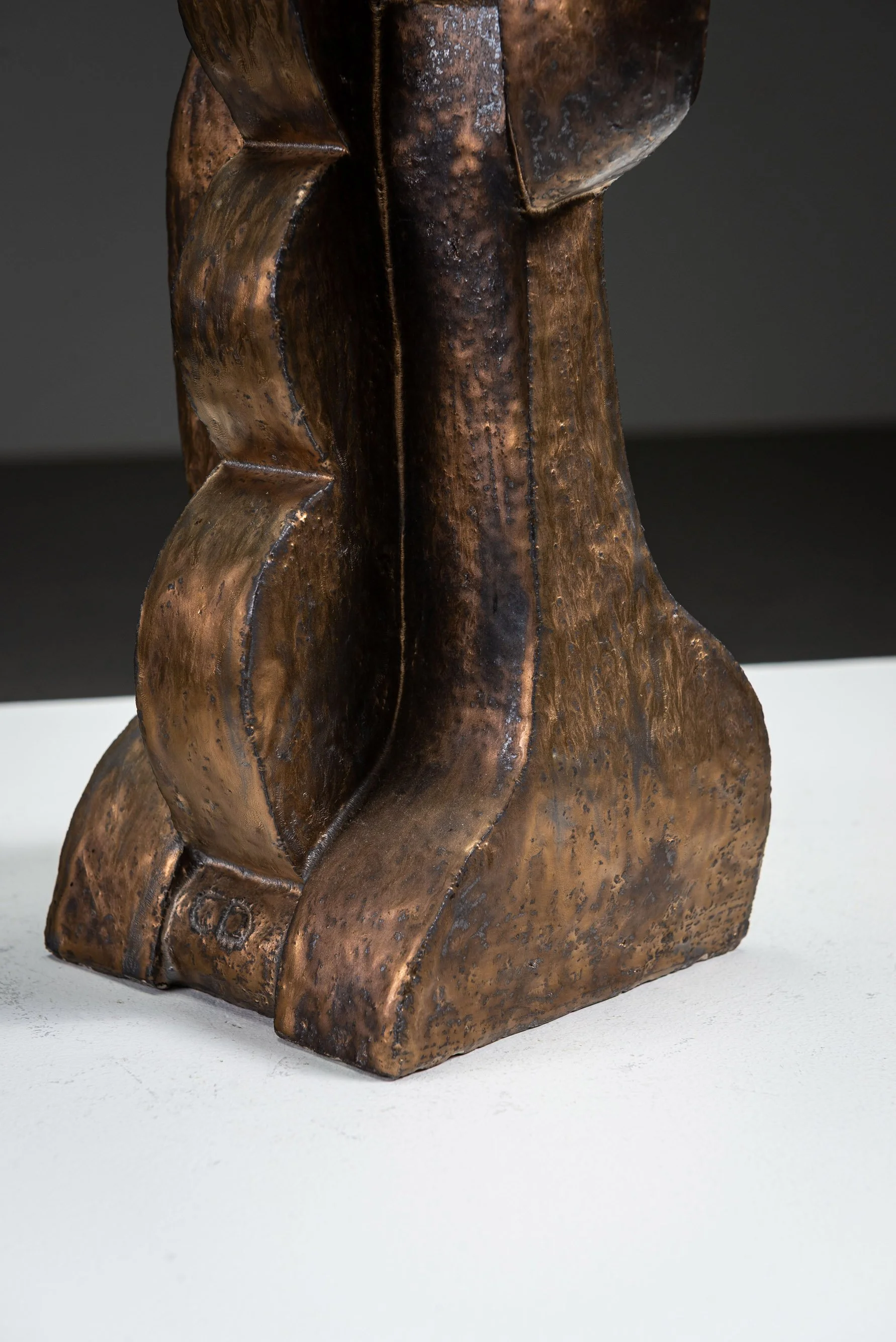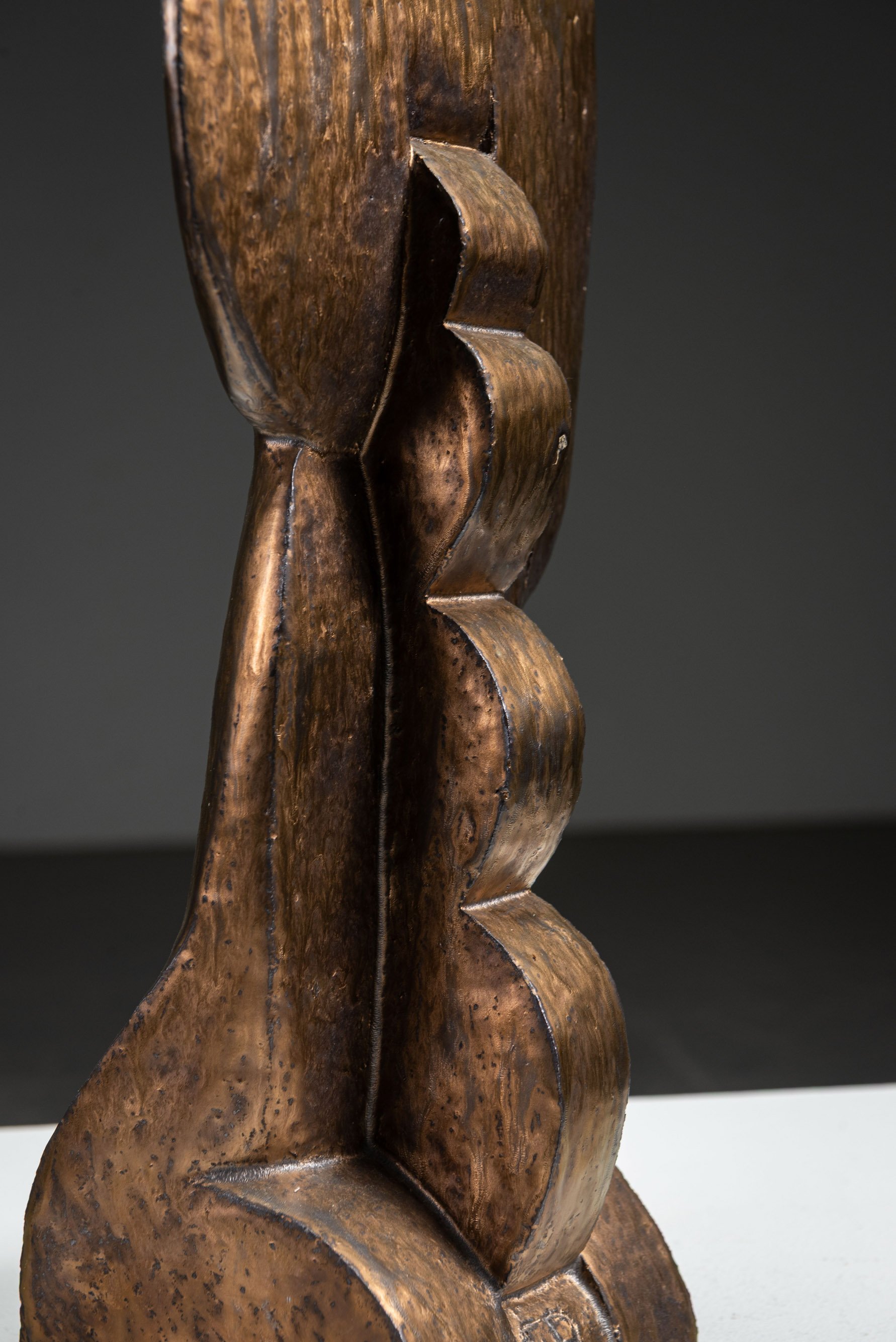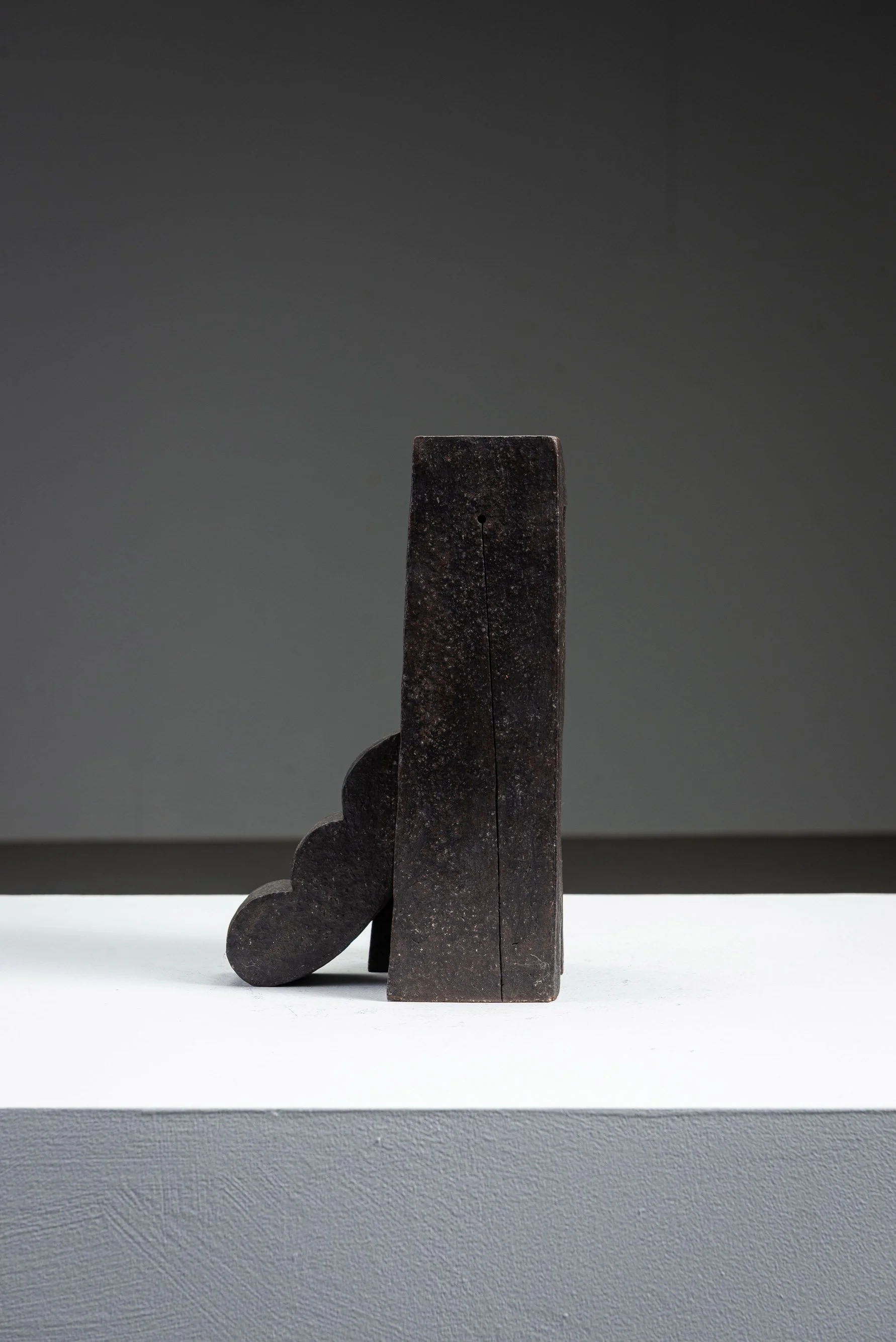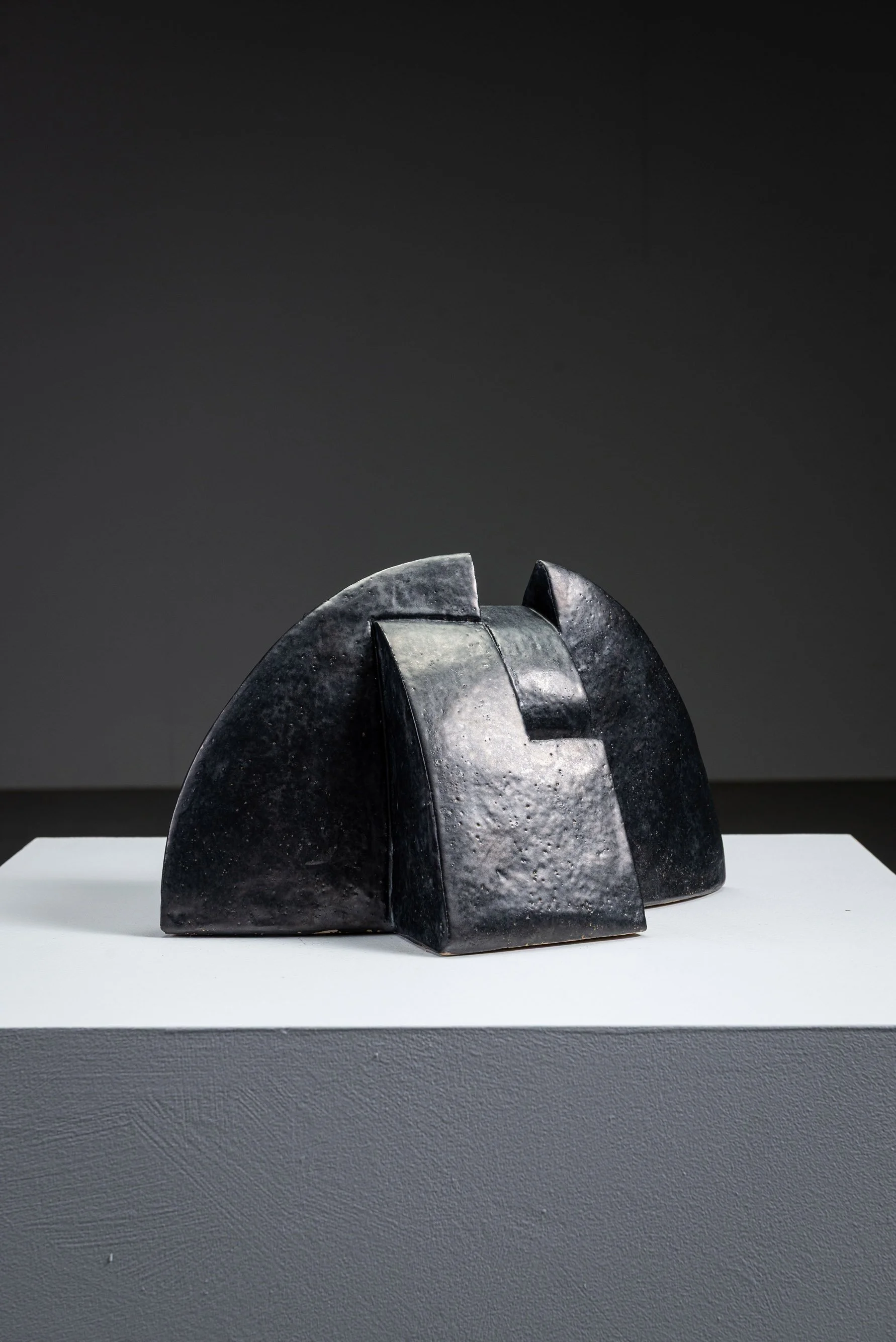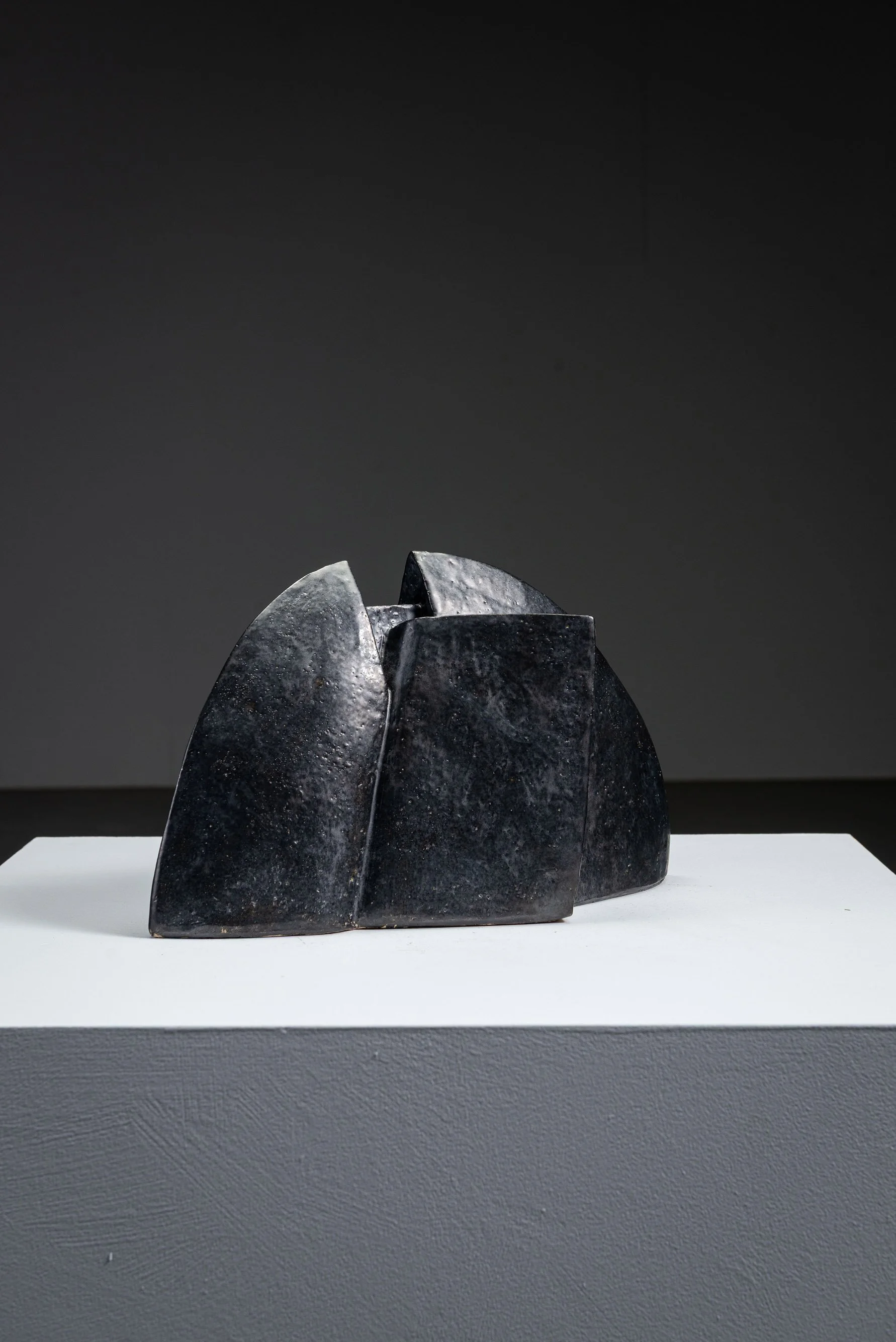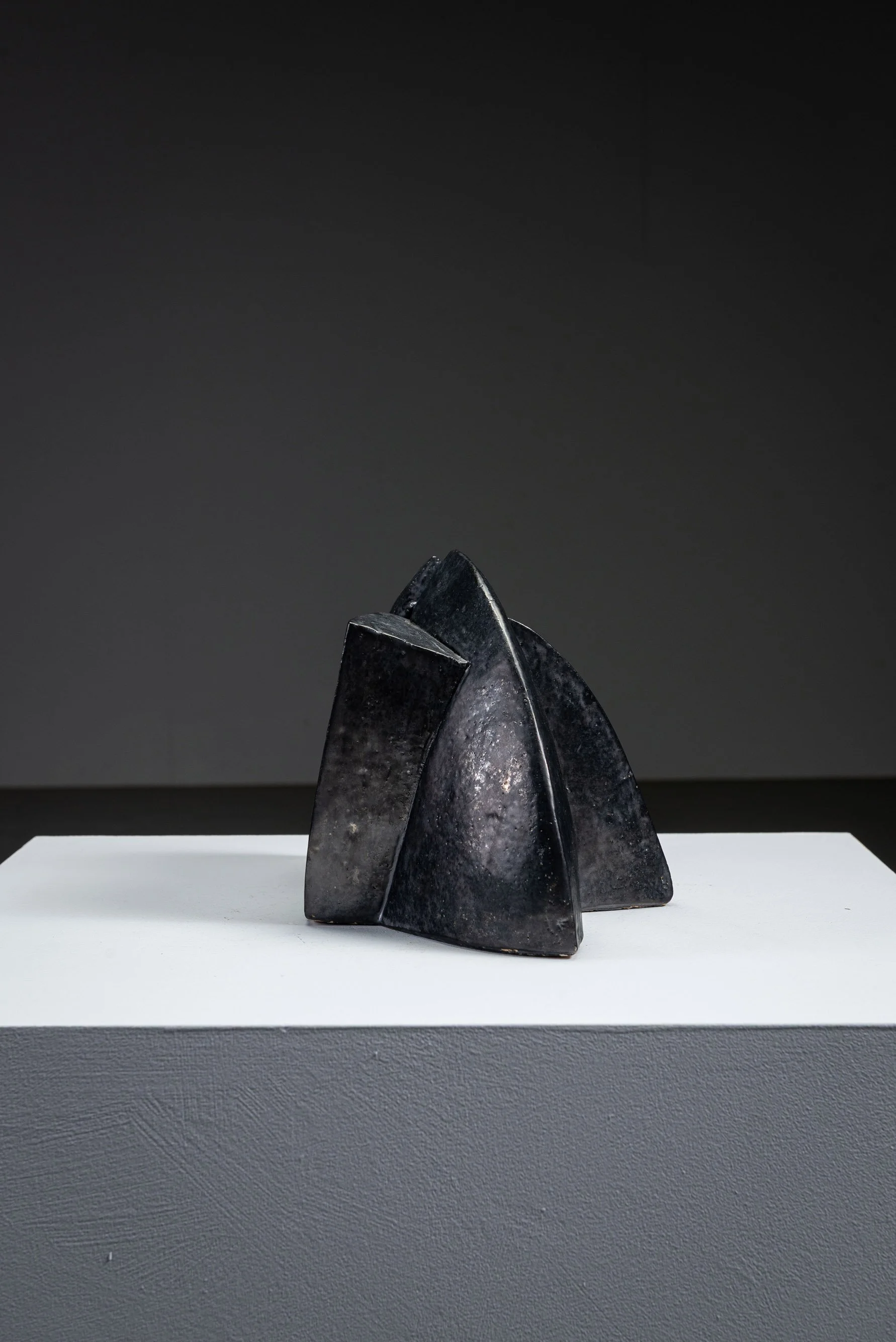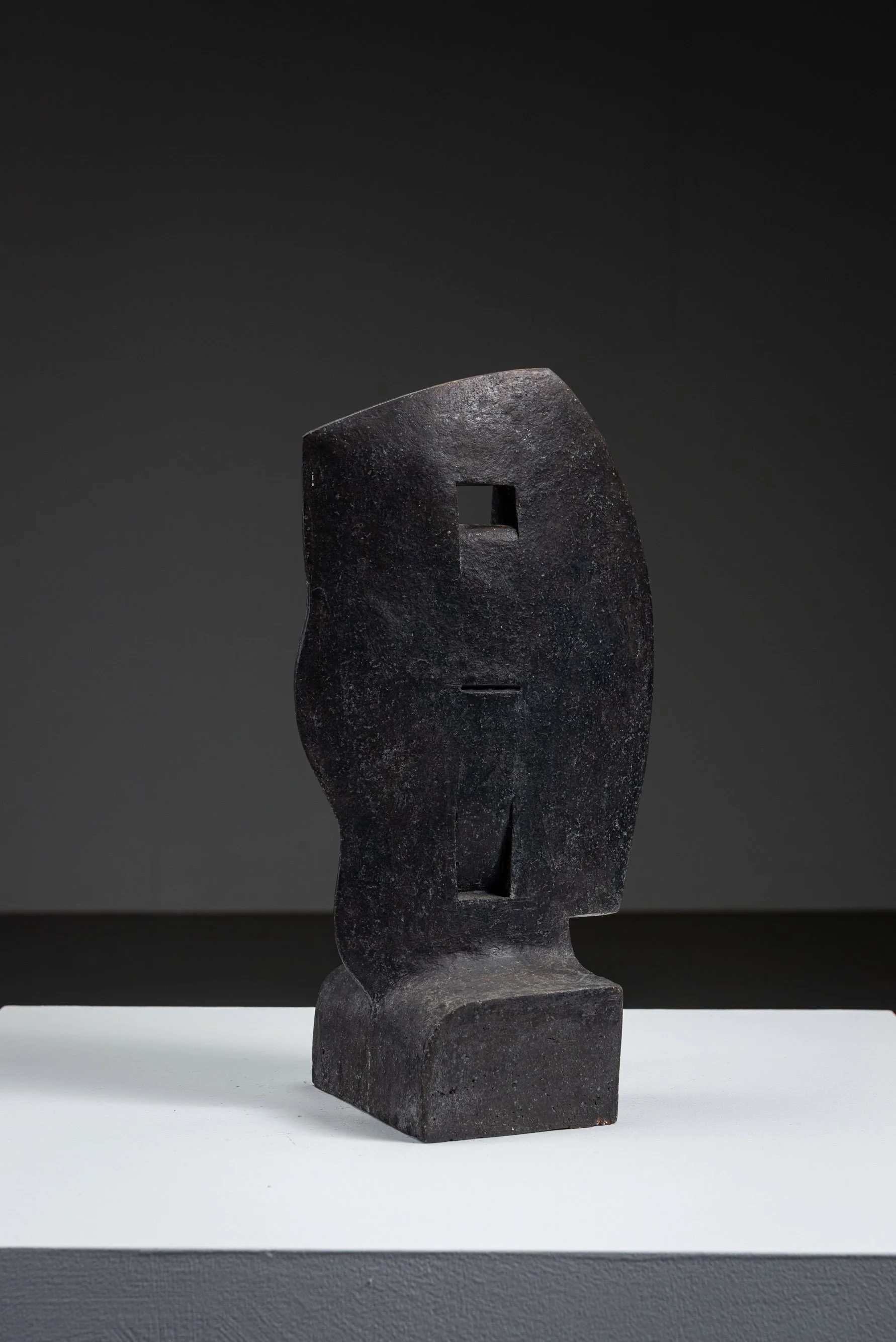 Image 1 of 16
Image 1 of 16

 Image 2 of 16
Image 2 of 16

 Image 3 of 16
Image 3 of 16

 Image 4 of 16
Image 4 of 16

 Image 5 of 16
Image 5 of 16

 Image 6 of 16
Image 6 of 16

 Image 7 of 16
Image 7 of 16

 Image 8 of 16
Image 8 of 16

 Image 9 of 16
Image 9 of 16

 Image 10 of 16
Image 10 of 16

 Image 11 of 16
Image 11 of 16

 Image 12 of 16
Image 12 of 16

 Image 13 of 16
Image 13 of 16

 Image 14 of 16
Image 14 of 16

 Image 15 of 16
Image 15 of 16

 Image 16 of 16
Image 16 of 16

















Abstract Sculpture by Kenjirō Azuma
Kenjirō Azuma (1926-2016)
signed: Azuma 1/3
period: 1970s
origin: Japan
dimensions (cm): h40 x w24 x d15 cm
dimensions (inch): h15,75 x w9,45 x d5,91 in
material: bronze
Kenjirō Azuma (1926–2016) was born in Yamagata, Japan. After entering the Tokyo University of the Arts in 1949, he continued his studies at the Accademia di Belle Arti di Brera in Milan in 1956, beginning a six-decade career in Italy. In 1960 he joined the studio of Marino Marini (1901–1980), who advised him to remain true to his Japanese sensibility. Following this guidance, Azuma cleared his studio and embarked on a personal artistic path rooted in “unconstructed beauty” — rusting iron, decaying houses, the unseen elements behind matter, the balance between fullness and emptiness. These reflections led to his first Mu Bas-reliefs.
In 1961, Azuma became the only sculptor to join the Movimento Punto, founded in Milan by Hsiao Chin (b. 1935). His works from this period, including MU-750, combine abstract geometry with surreal undertones, reflecting both the ideals of the Punto Movement and affinities with contemporaries, such as Arnaldo Pomodoro (b. 1926) and Marino Marini.
In 1963 he received the National Museum of Modern Art prize in Tokyo, followed by a touring exhibition across seven major museums in the United States. Another example of his work is held in the collection of the Vatican Museums (inventory no. 22970): Vatican Museums Collection.
Kenjirō Azuma (1926-2016)
signed: Azuma 1/3
period: 1970s
origin: Japan
dimensions (cm): h40 x w24 x d15 cm
dimensions (inch): h15,75 x w9,45 x d5,91 in
material: bronze
Kenjirō Azuma (1926–2016) was born in Yamagata, Japan. After entering the Tokyo University of the Arts in 1949, he continued his studies at the Accademia di Belle Arti di Brera in Milan in 1956, beginning a six-decade career in Italy. In 1960 he joined the studio of Marino Marini (1901–1980), who advised him to remain true to his Japanese sensibility. Following this guidance, Azuma cleared his studio and embarked on a personal artistic path rooted in “unconstructed beauty” — rusting iron, decaying houses, the unseen elements behind matter, the balance between fullness and emptiness. These reflections led to his first Mu Bas-reliefs.
In 1961, Azuma became the only sculptor to join the Movimento Punto, founded in Milan by Hsiao Chin (b. 1935). His works from this period, including MU-750, combine abstract geometry with surreal undertones, reflecting both the ideals of the Punto Movement and affinities with contemporaries, such as Arnaldo Pomodoro (b. 1926) and Marino Marini.
In 1963 he received the National Museum of Modern Art prize in Tokyo, followed by a touring exhibition across seven major museums in the United States. Another example of his work is held in the collection of the Vatican Museums (inventory no. 22970): Vatican Museums Collection.


